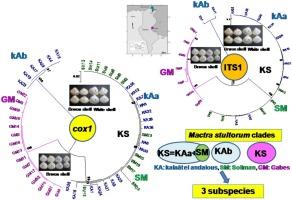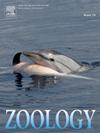Molecular signature of phylogenetic relationships and demographic history of Tunisian Mactra stultorum: Evidence from mitochondrial and nuclear DNA data
Abstract
The genetic structure of Mactra stultorum is inferred from partial sequence of a mitochondrial cox1gene and of the internal transcribed spacer region ITS1. The samples with two colors of shell (white and brown) were collected from three sites belonging to the Tunisian coasts: Kalaât El Andalous (KA) and Soliman (SM) and Gabes (GM)). The phylogenetic trees obtained from the 2 markers are similar and subdivided samples into 3 distinct clades; clade (1) regrouped GM, clade (2) regrouped KS (KS contains samples from SM and KAa) and clade (3) is formed by KAb. Using the external sequences from genbank, it can be suggested that M. stultorum from the three clades KS, GM and KAb are three subspecies. The two sympatric M. stultorum from KA (KAa and KAb) appear to be genetically isolated showing a high genetic distance and no common haplotypes where the shell color serves for segregating marker. A total of 29 and 18 haplotypes were detected in the examined cox1 and ITS1 regions, respectively. Our study revealed higher levels of genetic diversity for ITS1 compared to cox1. For both markers, significant clinal changes in haplotypes frequencies between the north and the south populations supported by the absence of common haplotypes were observed. The demographic history of M. stultorum populations has been assessed using neutral tests and mismatch distribution for cox1 marker. A unimodal curve of the Mismatch’s distribution and negative significant neutral tests suggested a recent sudden demographic expansion for GM.


 求助内容:
求助内容: 应助结果提醒方式:
应助结果提醒方式:


